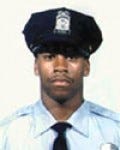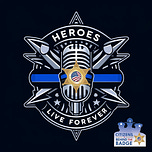
McLean, VA (February 18, 2025) - Shoot, or don’t shoot. That is the question every police officer has to face when they are confronted by a person with a gun. They usually have less than a second to make the decision. A Washington, D.C., police officer was faced with that choice on the evening of February 7, 1995. He and his partner were barely 10 minutes into their shift when they spotted a man holding a gun. They slammed on the brakes of their patrol car, turned on their flashing lights and raced to the scene up ahead. One of the officers assumed a shooter’s stance and ordered the man to drop his weapon. The man instinctively turned to see who was giving the order. When he turned toward the officer, so did his gun. Fearing for his life, the officer fired and shot the man twice. When his partner ran to the victim to check his condition, he pulled open the man’s jacket and found something he had not expected. There was a police badge clipped to the man’s belt. He was an off-duty D.C. police officer. His name was James Madison McGee, Jr. Officer McGee, 26, was in street clothes when he came upon two men robbing a cab driver at gunpoint. He was trying to hep the cab driver and make an arrest when the other officers drove up. It was simply a horrible case of mistaken identity.












Share this post